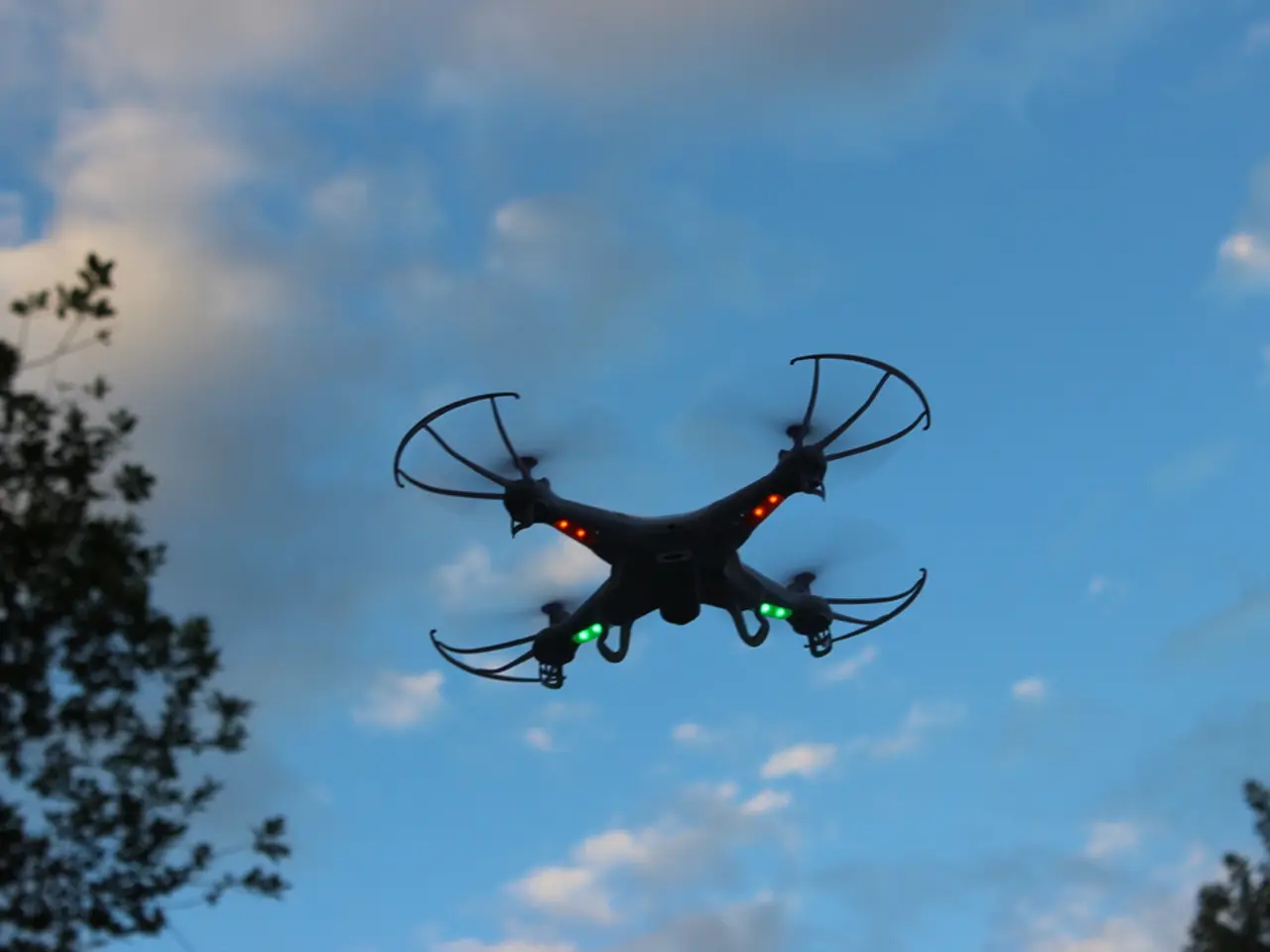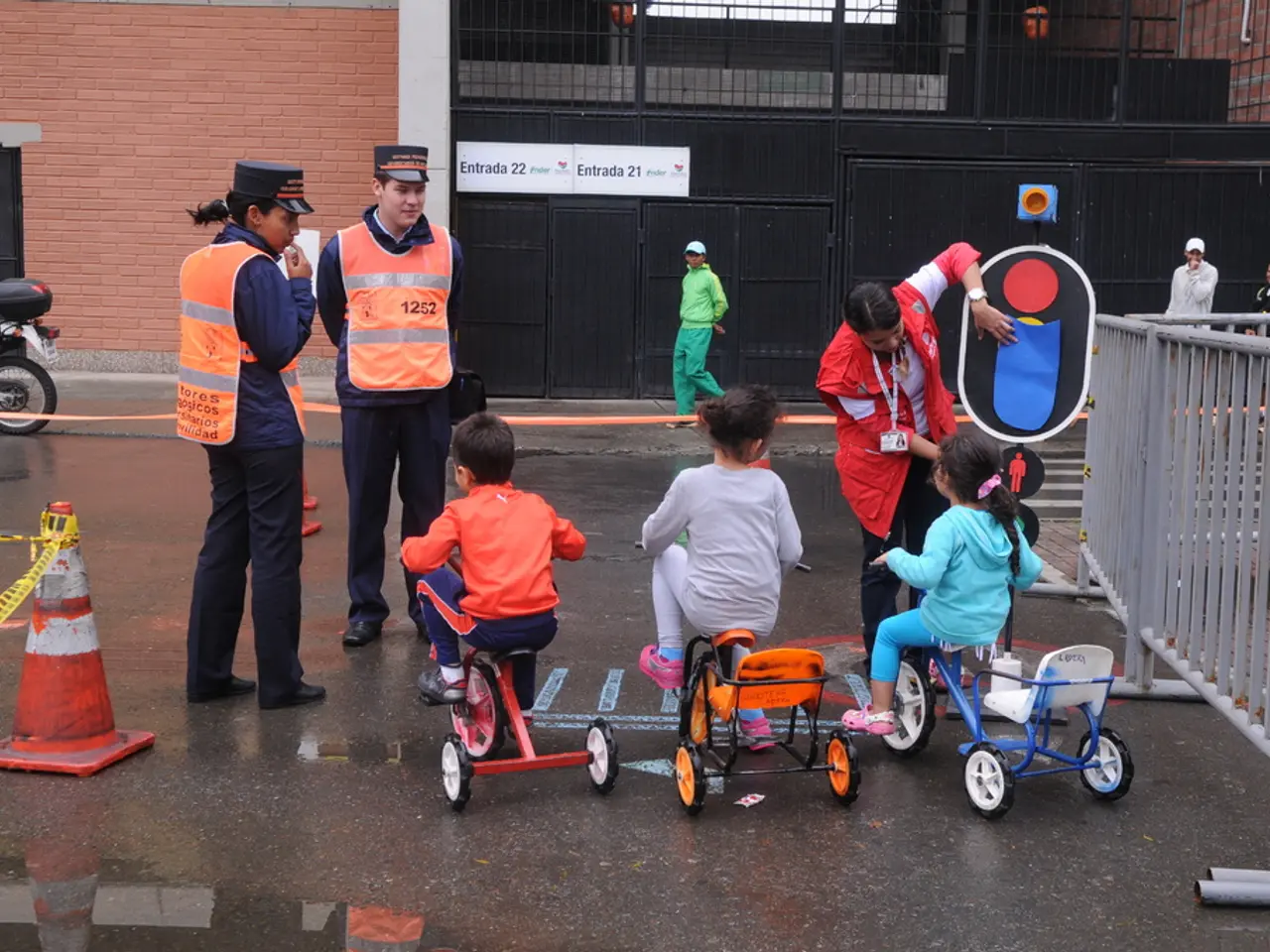Exploring Drone Mapping in Detail: Latest 2025 Insights
Drone mapping, the process of using drones to capture aerial imagery and geospatial data, is rapidly gaining popularity across various sectors. This innovative technology is revolutionizing how industries collect and analyse data, improving accuracy, reducing costs, and accelerating project timelines.
In the realm of public safety and emergency response, drone mapping plays a crucial role in disaster response and public safety efforts. Post-disaster, drones are used for damage assessments, rapid mapping of affected areas, and supporting search and rescue operations with real-time visual data.
The real estate and development sector is another significant user of drone mapping. Drones help developers, architects, and real estate professionals better visualize land and plan projects. They create detailed site maps, capture up-to-date aerial imagery for real estate listings, generate 3D models for concept visualization and architecture, and support permitting processes with accurate terrain data.
Environmental monitoring is another area where drone mapping shines. High-resolution aerial data supports accurate assessments with minimal environmental impact. In agriculture, drone mapping helps farmers and agronomists manage irrigation, spot early signs of disease, and implement precision farming practices using multispectral imagery.
The mining industry also benefits from drone mapping. High-accuracy terrain models, stockpile volumetrics, and haul road inspections are common use cases. Drone mapping enables safer, more frequent data collection in environments that are often difficult or dangerous to access on foot.
In the construction industry, drone mapping supports project planning, progress tracking, and cost estimation by providing accurate elevation models. Teams can monitor earthworks and keep projects on schedule.
In the utilities and infrastructure sector, drone mapping improves safety while offering faster, more cost-effective inspections over large areas. Assets like power lines, substations, pipelines, and water treatment facilities can be inspected with precision.
To legally operate a drone for commercial mapping in the U.S., you'll need a Part 107 Remote Pilot Certificate from the FAA. To get started, you'll need a mapping drone, mapping software, and accessories like Ground Control Points (GCPs), GPS base stations (used with RTK drones), extra batteries, and portable landing pads or cases for rough terrain.
Popular drone mapping software includes DroneDeploy, Pix4Dmapper, DJI Terra, Agisoft Metashape, and Propeller. Each software platform has specific strengths, catering to different needs based on drone hardware compatibility, project scale, required precision, and user interface preferences.
For instance, Pix4D is renowned for precision photogrammetry and 3D mapping, offering a comprehensive suite including Pix4Dmapper for general mapping and Pix4Dfields for agriculture. Agisoft Metashape Pro is a high-performance photogrammetry software optimized for multi-core CPUs and multi-GPU systems, capable of handling large datasets including LiDAR fusion and multispectral analysis.
DJI Ground Station Pro (GS Pro) is an iPad-exclusive app optimized for DJI drones, focused on advanced flight automation and professional-grade aerial mapping. UgCS is known for its flexible, customizable flight planning with the ability to combine mission segments and fine-tune flight paths.
In the "crawl-walk-run" framework of progress, drone mapping is off and running. Today, a huge range of industries use drone mapping as part of their work, including construction, agriculture, mining, and land surveying.
In all these industries, drone mapping provides an inexpensive way to quickly map a large area. For example, in environmental monitoring, drone mapping is used to track land changes, assess habitats, and support conservation initiatives. In the agricultural sector, drone mapping helps farmers manage irrigation, spot early signs of disease, and implement precision farming practices using multispectral imagery.
When marketing drone mapping work, it's important to avoid using the term "surveyor" or making claims that could be interpreted as offering professional surveying unless you're working with or under the direction of a licensed surveyor.
In conclusion, drone mapping is a powerful tool that is transforming the way industries collect and analyse data. Its versatility, efficiency, and cost-effectiveness make it an invaluable asset in various sectors, from public safety and emergency response to real estate and agriculture. As technology continues to evolve, we can expect drone mapping to become even more integrated into our daily lives.
[1] Pix4D: https://www.pix4d.com/ [2] DJI Ground Station Pro (GS Pro): https://www.dji.com/gs-pro [3] Agisoft Metashape Pro: https://www.agisoft.com/ [4] UgCS (Universal Ground Control Software): https://ugcs.com/ [5] Drone Pilot Ground School: https://www.dronepilotgroundschool.com/ [6] Popular Mapping Drones: WingtraOne Gen II, DJI Matrice 350 RTK, eBee X, AstroMax.
- The utilities and infrastructure sector benefits from drone mapping, offering faster, more cost-effective inspections and improving safety for assets like power lines, substations, pipelines, and water treatment facilities.
- To legally operate a drone for commercial mapping in the U.S., you'll need a Part 107 Remote Pilot Certificate from the FAA.
- For instance, Pix4D is renowned for precision photogrammetry and 3D mapping, offering a comprehensive suite including Pix4Dmapper for general mapping and Pix4Dfields for agriculture.
- Drone mapping is rapidly gaining popularity across various sectors, revolutionizing how industries collect and analyze data.
- In the realm of public safety and emergency response, drone mapping plays a crucial role in disaster response and public safety efforts, supporting search and rescue operations with real-time visual data.
- In the real estate and development sector, drones help developers, architects, and real estate professionals better visualize land and plan projects by creating detailed site maps, capturing up-to-date aerial imagery for real estate listings, and generating 3D models for concept visualization and architecture.
- Environmental monitoring is another area where drone mapping shines, with high-resolution aerial data supporting accurate assessments with minimal environmental impact.
- In the construction industry, drone mapping supports project planning, progress tracking, and cost estimation by providing accurate elevation models, allowing teams to monitor earthworks and keep projects on schedule.
- In the agricultural sector, drone mapping helps farmers manage irrigation, spot early signs of disease, and implement precision farming practices using multispectral imagery.




